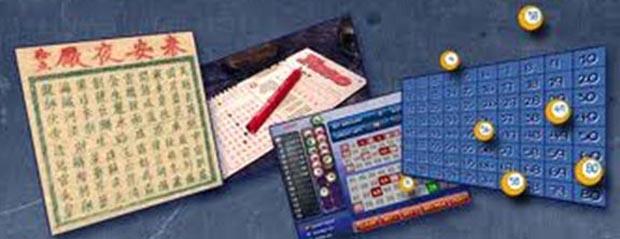
Understanding keno and its unique rules begins keno history. Keno players that want to go above and beyond in their knowledge of the game will find what they’re looking for in the history of keno.
Gaming aficionados believe the history of keno dates back thousands of years. Most historians agree that keno origins are rooted in ancient China. It was only in the 19th century, when the game moved west, that it became a worldwide phenomenon.
As legend has it, keno origins date back 2,200 years to a Chinese general named Cheung Leung. In the midst of war and in need of money to pay for artillery and protection—taxes were as popular then as they are now—Leung invented a game similar to keno as a means of leveraging his resources.
It is said that his invention was based on a poem title “The Thousand Character Classic”. The poem consisted of one thousand different Chinese characters and was used to teach children to read and write the Chinese language.
Leung arranged 120 of the poem’s characters on a board not unlike a modern lotto board. The first keno players paid money to place bets on multiple characters. They were allowed to place up to 10 bets and used a quill ink pen to mark their bets on the board. The term “Spots”, still in use in modern keno play, is a reference to these marks.
Most of the poem’s characters had romantic names like “cloud” and “dew”. One, however, was known as “stupid loser”. (Fortunately these days understanding keno doesn’t require the ability to read Chinese!)
The game was a success and Leung was able to defend his cities using artillery bought with the money he made. Keno’s forbearer had quickly become the most popular game in ancient China.
After the war, profits from the game were used to finance the construction of one of the most famous structures in the world: the Great Wall of China. The still unnamed game became known as “Great White Pigeon Game”, because trained white pigeons carried game results from town to town. It was so popular that some players waited all night for the white pigeon to arrive with the announcement of the latest winners.
Over the centuries, the number of characters on the game board fell from 120 to 90. By the late 1850’s its board had been further reduced to contain only 80 characters.
It was within the mid- to late-19th century that keno as we know it took shape. When Chinese immigrants journeyed to America to work on its burgeoning railroad, keno accompanied them. This is where the modern history of keno begins.
Most of the Chinese immigrants arrived and remained in the San Francisco area. It was here that keno flourished. The immigrants played keno to relax after work. Americans referred to it as the “Chinese lottery” and it sparked great interest within other communities as well.
But understanding keno was difficult for non-Chinese players who couldn’t read the board’s characters. As a solution, the keno card was changed to Arabic numerals, making it an easier game for English speakers to understand and play.
Gambling was legalized in the United States in 1931. Lotteries, however, were not. In order to keep playing, keno was renamed “Race Horse Keno”, thus giving the impression that it was not a lottery. To this day, keno rounds are called races.
When lotteries were finally legalized, keno reverted to its original name. It landed in American casinos in the early 20th century and soon after establishments throughout the world began offering it to their patrons.
Originally, each of the keno board’s 80 numbers was written on a folded piece of paper and placed in a bowl. 20 numbers were then drawn from the bowl and declared the winning numbers. Wooden balls with carved numbers eventually replaced the scraps of paper. These wooden balls were known as “peas”.
A man by the name of Warren Nelson came up with the system of drawing the balls from a rotating cage. Nelson opened his own casino in Nevada in 1936, which is where the first legal casino keno game was played. There, keno numbers are still drawn from a rotating cage.
The same cannot be said of most other casinos, wherein Nelson’s rotating cage has succumbed to modernization. These days, computers handle the drawing process, thus making keno play faster, easier, and more secure.
Keno spread to the Internet in the 1990s. Online keno was a hit from the moment the first web gambling site opened its virtual doors. Thanks to its easy-to-follow format, it quickly became one of the most popular online casino games. There are now millions of keno players around the world!
Next to no changes were needed when it came to applying casino keno to online play. The online game still includes a board, 80 characters and the selection of 20 winning numbers. For now, keno history is at a standstill, but who knows what tomorrow will bring? Read the Gambling City Guide to Keno for more information on keno rules, strategy and tips.
